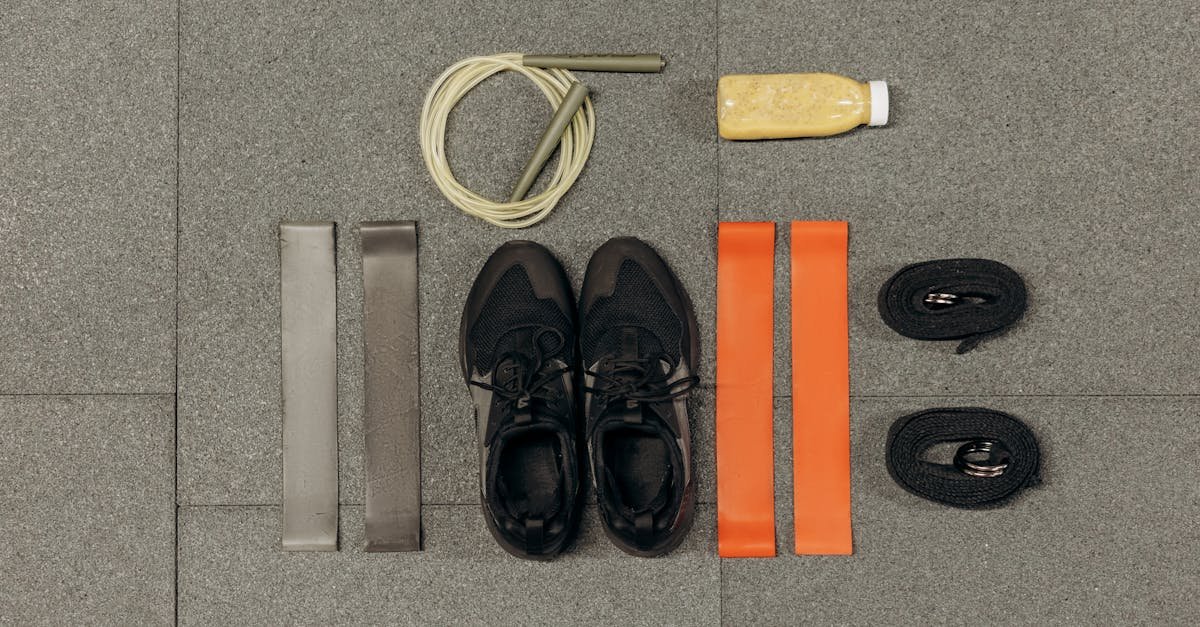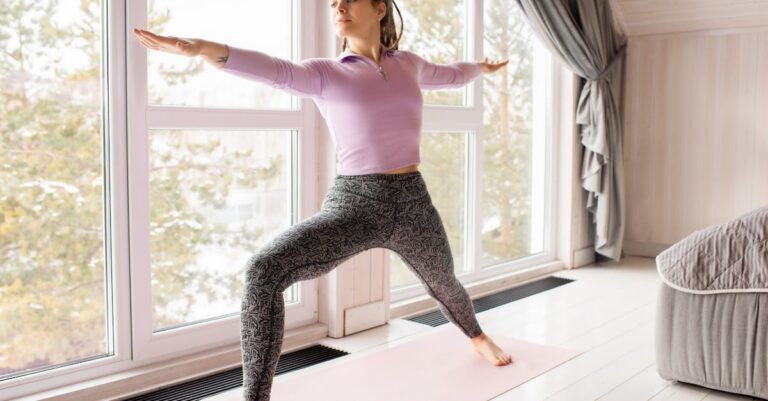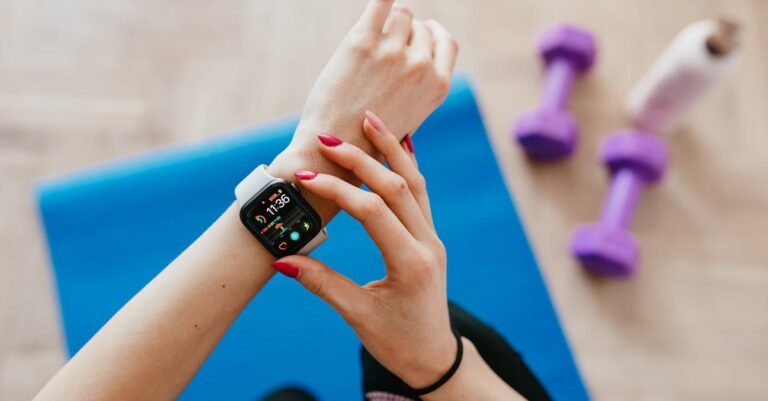So, you’ve jumped into the world of home workouts! Awesome! Maybe you’re squeezing in sessions between video calls, rolling out a yoga mat after the kids are asleep, or finally using those dumbbells collecting dust. But here’s a tricky part: how do you actually know if you’re getting stronger, faster, or fitter? It’s easy to feel like you’re just going through the motions. That’s where cool gadgets like fitness trackers and smartwatches – wearables! – come in. They’re like little coaches on your wrist. Stick around, and you’ll figure out exactly how to use these gizmos to see your progress, understand your body better, and actually know that your hard work at home is paying off. Ready to level up your home fitness game?
Why Bother Tracking Anyway?
Okay, real talk: why even track your workouts? Isn’t just doing them enough? Well, think about playing a video game. You wouldn’t just run around randomly, right? You track your score, your level, the items you collect. It shows you how you’re improving and keeps things exciting! Fitness is kind of the same.
Tracking shows you what’s working. Let’s say you’ve been doing bodyweight squats for weeks. Are you actually getting stronger, or just doing the same thing over and over? Tracking things like how many reps you can do, or maybe how your heart rate responds, gives you real clues. Seeing those numbers change over time is like getting a high score – it’s super motivating! It turns “I think I feel fitter?” into “Whoa, look! I did 5 more push-ups than last month!” That proof keeps you coming back for more, even on days when the couch looks *really* comfy.
What Can Wearables Actually Track at Home?
These wrist gadgets are smarter than they look! Even when you’re working out in your living room, they can pick up on a bunch of useful stuff. Here’s the lowdown:
- Heart Rate: This is a big one. It tells you how hard your body is working. Imagine doing jumping jacks – your tracker will show your heart rate shoot up. Compare that to a gentle stretching session where it stays lower. Seeing these differences helps you know if you’re pushing yourself enough (or maybe too much!).
- Steps & Movement: Yep, even steps inside your house count! Pacing while on the phone? Doing some energetic cleaning? A good tracker logs that general activity. It all adds up and shows you how active you are throughout the day, not just during the “official” workout time.
- Calories Burned: Now, this is mostly an estimate based on your movement, heart rate, and personal info (like age and weight). Don’t live and die by this number, but it’s handy for comparing workouts. Did that new, tougher routine burn more calories than your usual one? The tracker can give you a hint.
- Workout Time & Intensity: Most wearables let you start and stop tracking for a specific workout. They log how long you went and often use your heart rate to guess how intense it was (think ‘light,’ ‘moderate,’ ‘vigorous’). It’s cool to look back and see, “Okay, I did three workouts this week, and two of them were pretty intense.”
- Sleep: Wait, sleep? Yep! Recovery is HUGE for fitness. Many wearables track how long and how well you sleep. Maybe you notice you feel sluggish in workouts after a night of bad sleep? Your tracker data might back that up, reminding you that rest is just as important as the workout itself.
Picking the Right Wearable Buddy
Okay, so you’re thinking a wearable might be cool. But walk into a store (or browse online) and BAM! So many choices. You’ve got sleek fitness bands, fancy smartwatches that look like something out of a spy movie… what do you actually need for home workouts?
Think about what you do most. If you primarily do yoga, walks, and maybe some bodyweight stuff, a simpler fitness band that nails heart rate and basic activity tracking might be perfect. If you dabble in lots of different things – maybe HIIT videos one day, dancing the next, cycling on a stationary bike – a smartwatch with more specific workout modes might be better. Some can even auto-detect what you’re doing (sometimes!).
Here’s what to look for:
- Good Heart Rate Monitor: Since this helps gauge intensity, you want one that’s fairly accurate.
- Relevant Workout Modes: Does it have options for the types of exercise you do?
- Comfort: You’ll wear it a lot, maybe even to sleep. It shouldn’t bug you.
- Battery Life: How often do you want to charge it? Some last a day, others a week or more.
- Easy-to-Use App: The tracker sends data to an app on your phone. Is that app clear and simple to understand? Can you find your stats easily?
You don’t necessarily need the most expensive model with a million features you won’t use. Find the one that fits your workouts, your budget, and feels good on your wrist.
Making Sense of the Numbers (Without Getting Obsessed)
Alright, you’ve got your wearable, you’ve done some workouts, and now your app is full of charts and numbers. Cool! But… what does it all mean? The trick is not to get hung up on every single number every single day. Your body isn’t a robot; some days you’ll have more energy than others.
Focus on the trends over time. Is your average resting heart rate (your heart rate when you’re chilling out) slowly getting lower over weeks? That’s usually a sign your heart is getting stronger! Are you able to keep your heart rate in a higher zone for longer during your cardio workouts compared to last month? Awesome progress!
Think of it like watching your grades in school. One slightly lower score on a pop quiz doesn’t mean you’re failing the class, right? You look at the overall picture. Same here. Maybe you burned fewer calories today because you were tired. That’s okay! Look at your weekly or monthly averages. The app on your phone is your friend here – it usually shows graphs that make seeing these trends easier. Use the data to learn about yourself, not to judge yourself harshly based on one day’s numbers.
Beyond the Basics: Connecting the Dots
Once you get comfy looking at individual stats like heart rate or steps, you can start connecting the dots. This is where things get really interesting because you see how different things affect each other. For example, you might notice that on days after you slept poorly (your sleep tracker told you so!), your heart rate spikes higher during your workout, and it feels way harder, even if you’re doing the same routine. Boom! Connection made: good sleep really does help your workouts.
Or maybe you see your resting heart rate gradually dropping over a few months of consistent workouts. That’s your tracker showing you – in numbers! – that your cardiovascular health is improving. You might also realize that what *feels* like a super tough workout actually only keeps your heart rate in a moderate zone. That might mean you have more gas in the tank than you thought and could push a little harder next time if you want to.
Don’t forget, wearables aren’t perfect mind-readers. If you’re doing strength training, the tracker knows you’re working out, but it doesn’t know if you lifted 5-pound weights or 20-pound weights. Most tracker apps let you manually add details like that, giving you an even clearer picture of your progress (like tracking how much weight you can lift over time).
Keeping It Fun and Staying Motivated
Let’s be honest, tracking data can feel a bit like homework sometimes. The key is to use your wearable to keep things fun and keep you motivated, not make it a chore. Lots of trackers and their apps have built-in games or challenges. Maybe it’s hitting a certain number of steps each day, reaching a goal for ‘active minutes,’ or earning virtual badges for workout streaks. These little things can add a layer of fun competition, even if it’s just against yourself.
Use the data to set small, achievable goals. Instead of just saying “I want to get fitter,” look at your tracker and say, “Okay, this week I averaged 20 active minutes per workout. Next week, I’ll aim for 22.” It makes your goals concrete and measurable.
If you have friends with similar trackers, many apps let you share progress (if you want to!) or compete in friendly challenges. A little social nudge can go a long way. But most importantly, remember *why* you started working out at home in the first place. Was it to feel less stressed? Have more energy? Play with your kids without getting winded? The wearable is just a tool to help you see if you’re moving towards *that* goal. Don’t let the tech become the boss – use it to cheer yourself on!
So, there you have it! Working out at home is a fantastic way to stay active, and using a wearable tracker can seriously boost your journey. It’s not just about logging minutes; it’s about understanding your effort through things like heart rate, seeing how consistent movement adds up, and even realizing how important sleep is for your recovery. By picking a wearable that fits your activities and learning to look at the trends in your data – rather than obsessing over daily numbers – you get real proof of your progress. This isn’t about high-tech pressure; it’s about having a handy tool on your wrist that shows you just how far you’ve come and motivates you to keep going. Use it wisely, have fun, and watch your home workout results speak for themselves!










